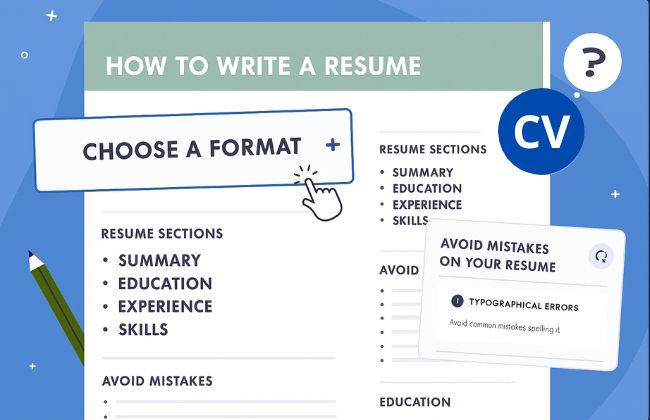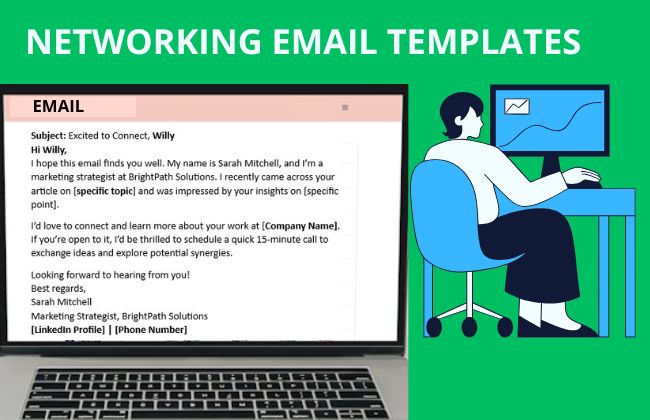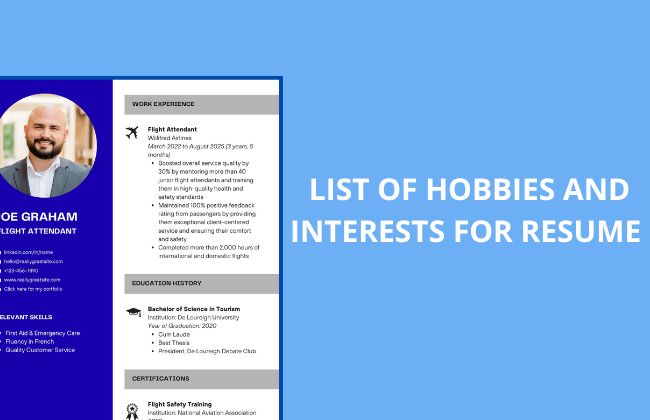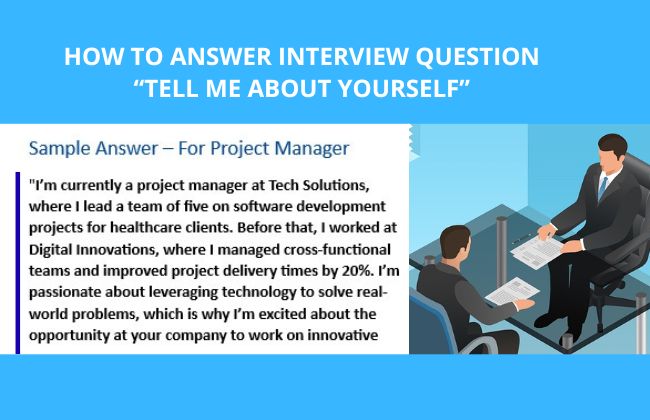Your resume is more than just a list of jobs and qualifications—it’s your ticket to new career opportunities and a powerful tool to tell your professional story. But with recruiters spending only a few seconds scanning each resume, how can you make yours stand out from the rest?

Whether you’re just starting your career, making a switch to a new industry, or aiming for that next big promotion, knowing how to write an effective resume is essential.
From understanding what employers are really looking for to choosing the right words and format, every detail matters.
In this post, we’ll guide you step-by-step through the resume writing process, sharing expert tips and strategies to help you highlight your strengths and achievements. Plus, we’ll provide real Resume Examples to show you exactly what works.
Table of Contents
- 1 Choosing the Right Resume Format
- 2 Standard Structure of a Resume
- 3 How to Write a Resume Step-by-Step
- 3.1 Step 1: Understand the Job and Tailor Your Resume
- 3.2 Step 2: Choose the Right Resume Format
- 3.3 Step 3: Start With Your Contact Information
- 3.4 Step 4: Write a Strong Summary or Objective
- 3.5 Step 5: List Your Work Experience
- 3.6 Step 6: Add an Education Section
- 3.7 Step 7: Highlight Your Skills
- 3.8 Step 8: Include Optional Sections
- 3.9 Step 9: Tailor Your Resume for Each Job
- 3.10 Step 10: Proofread and Format Your Resume
- 3.11 Step 11: Save and Send Your Resume Correctly
- 4 Design and Formatting Tips
- 5 Resume Examples for Inspiration
Choosing the Right Resume Format
The resume format you choose depends on your experience, career goals, and the job you’re applying for. There are three primary resume formats: Chronological, Functional, and Combination.
Each has unique strengths, and selecting the right one can highlight your qualifications effectively.
1. Chronological Resume
What it is: Lists your work experience in reverse chronological order (most recent job first).
Best for:
- Candidates with a strong, consistent work history.
- Those applying to traditional industries like finance, education, or government.
Pros:
- Highlights career progression.
- Easy for employers to scan.
Cons:
- May expose gaps in employment.
- Less effective for career changers or those with limited experience.
When to use: If you have a steady work history and want to emphasize your professional growth.
2. Functional Resume
What it is: Focuses on skills and abilities rather than work history, grouping qualifications by skill categories.
Best for:
- Recent graduates with limited work experience.
- Career changers or those with employment gaps.
Pros:
- Highlights transferable skills.
- Minimizes focus on employment gaps or unrelated jobs.
Cons:
- May raise red flags for employers who prefer a clear work history.
- Less common in traditional industries.
When to use: If you want to emphasize skills over experience or are entering a new field.
3. Combination Resume
What it is: Blends chronological and functional formats, highlighting both skills and work history.
Best for:
- Candidates with relevant skills and some work experience.
- Those transitioning to a slightly different role or industry.
Pros:
- Balances skills and experience.
- Flexible for various career stages.
Cons:
- Can become lengthy if not carefully edited.
- Requires clear organization to avoid confusion.
When to use: If you have a mix of relevant skills and experience to showcase.
Format Comparison:
| Format | Best For | Key Focus | Challenges |
| Chronological | Consistent work history | Work experience | Employment gaps, career changes |
| Functional | Limited experience, career changers | Skills and abilities | Less traditional, may lack work history |
| Combination | Mixed experience and skills | Skills + work history | Can be lengthy, needs clear structure |
Standard Structure of a Resume
A well-organized resume follows a clear structure to ensure readability and professionalism. Below is a standard resume structure with tips for formatting and design.
1. Header
Content: Contact information (name, phone, email, LinkedIn, etc.).
Placement: Top of the page, centered or left-aligned.
Formatting:
- Use a larger font (14-16 pt) for your name.
- Use a smaller font (10-12 pt) for contact details.
2. Professional Summary/Objective
Placement: Directly below the header.
Formatting:
- 2-4 sentences, no bullet points.
- Left-aligned, single-spaced.
3. Skills Section
Placement: After the summary or before work experience (especially for functional resumes).
Formatting:
- Use bullet points or a table for clarity.
- Group skills by category (e.g., Technical Skills, Soft Skills).
4. Work Experience
Placement: Core section, typically after skills or summary.
Formatting:
- List jobs in reverse chronological order (most recent first).
- Use consistent formatting: Job Title | Company Name, Location | MM/YYYY – MM/YYYY.
- Bullet points for duties and achievements (3-5 per role).
5. Education
Placement: After work experience (for experienced candidates) or after skills (for recent graduates).
Formatting:
- Degree, Major | Institution Name, Location | Year.
- Include GPA or honors if relevant.
6. Optional Sections
Placement: At the end, unless highly relevant to the job.
Formatting:
- Use concise bullet points or short paragraphs.
- Avoid cluttering the resume.
How to Write a Resume Step-by-Step
This guide is designed for beginners, offering a detailed, step-by-step process to build a resume that stands out to employers.
Step 1: Understand the Job and Tailor Your Resume
Before you start writing, research the job you’re applying for. A tailored resume aligns your skills and experience with the specific requirements of the role.
- Research the Job Posting: Carefully read the job description to identify key skills, qualifications, and responsibilities. Note keywords like “team collaboration,” “project management,” or specific tools (e.g., Excel, Python).
- Analyze the Company: Visit the company’s website, social media, or posts on X to understand its culture, values, and mission. This helps you emphasize relevant qualities.
- Customize for Each Application: Avoid using a generic resume. Adjust your content to match each job’s requirements, emphasizing the most relevant skills and experiences.
Example: If applying for a marketing assistant role that emphasizes “social media management” and “data analysis,” highlight any experience with platforms like Instagram or tools like Google Analytics.
Step 2: Choose the Right Resume Format
Start by selecting a format that highlights your strengths and fits your work history. There are three common resume formats to choose from:
- Chronological Resume (most common): Lists your work experience in reverse chronological order, highlighting your career progression. Suitable if you have consistent work history.
- Functional Resume: Focuses on skills rather than work experience. Ideal for students, recent graduates, or those with limited job experience.
- Combination Resume: Blends elements of chronological and functional formats. Best for experienced professionals showcasing both skills and achievements.
Tip: Beginners often use a functional or combination format to focus on skills and education while downplaying limited work experience.
Step 3: Start With Your Contact Information
This section should be simple but complete. At the top of your resume, include the following details:
- Full Name
- Phone Number
- Professional Email Address (avoid casual addresses like “funnyguy123@gmail.com”)
- Location (city and state or general area like “Greater Chicago Area”)
- LinkedIn Profile or Portfolio (if applicable)
Example:
John Doe
(555) 555-5555
john.doe@email.com
San Francisco, CA
linkedin.com/in/johndoe
Step 4: Write a Strong Summary or Objective
The summary or objective is the first section employers read. Use it to provide an overview of who you are and what you bring to the table.
- Summary: Best for those with some experience. Highlight your key skills and achievements.
- Objective: Best for beginners. State your career goals and how you can contribute to the company.
Example Summary:
“Customer-focused professional with 2+ years of experience in retail and sales. Skilled in building relationships and exceeding targets. Eager to contribute to ABC Company’s growth as a sales associate.”
Example Objective:
“Recent marketing graduate with strong organizational and analytical skills. Seeking an entry-level role at XYZ Inc. to apply academic knowledge and grow my expertise.”
Step 5: List Your Work Experience
Your work experience should tell a story of what you’ve accomplished in previous roles. If you’re new to the workforce, focus on internships, volunteer work, or part-time jobs.
- Start with your most recent role.
- Include the company name, job title, location, and dates of employment.
- Use bullet points to highlight your key responsibilities and achievements.
- Begin each bullet point with an action verb (e.g., “Managed,” “Organized,” “Developed”).
Example:
Retail Associate
XYZ Store – Chicago, IL (June 2023 – Present)
- Provided excellent customer service, assisting 50+ customers per day.
- Exceeded monthly sales targets by 15%.
- Trained 3 new hires on company policies and procedures.
Step 6: Add an Education Section
For entry-level candidates, your education section is critical. Include the following details for each institution:
- Degree earned or degree in progress.
- Institution name.
- Location (optional).
- Graduation date (or expected date).
- Relevant coursework (optional, if applicable to the job).
Example:
Bachelor of Science in Marketing
University of Illinois at Chicago
Graduated May 2025
Relevant Coursework: Digital Marketing
Step 7: Highlight Your Skills
The skills section helps employers see at a glance if you have the abilities required for the role. Tailor this section to the job description.
Hard Skills (Technical Abilities):
- Microsoft Excel
- Graphic Design (Adobe Photoshop and Illustrator)
- Data Analysis
Soft Skills (Interpersonal):
- Communication
- Time Management
- Problem-Solving
Tip: Use keywords from the job description to ensure your resume matches what employers are looking for.
Step 8: Include Optional Sections
Optional sections can showcase unique strengths or experiences that make you stand out.
- Certifications: List certifications that are relevant to the job.
- Languages: Mention any additional languages you’re proficient in.
- Volunteer Experience: Showcase involvement in community projects.
- Hobbies and Interests: Use sparingly, and only include if relevant to the job or company culture.
Example:
- Certifications: Google Analytics Certified, CPR Certified
- Languages: Fluent in English and Spanish
Step 9: Tailor Your Resume for Each Job
Customizing your resume for each job application dramatically increases your chances of being noticed.
- Use the job description to identify the keywords and skills the employer values most.
- Adjust your summary, skills, and experiences to align with the role.
- Highlight accomplishments that are most relevant to the job you’re applying for.
Tip: Don’t just copy-paste — tailor with intention!
Step 10: Proofread and Format Your Resume
Before sending your resume, ensure it’s free of errors and well-formatted.
- Check for spelling, grammar, and punctuation mistakes.
- Use a clean, professional font (e.g., Arial or Times New Roman).
- Keep it concise (1 page is ideal for beginners).
Tip: Ask a friend or mentor to review your resume to catch any overlooked errors.
Step 11: Save and Send Your Resume Correctly
Save your resume as a PDF to preserve its formatting across devices. Use a professional file name, such as “John_Doe_Resume.pdf.”
- Double-check the company’s application instructions.
- Attach your resume and include a personalized cover letter.
Design and Formatting Tips
- Length: 1 page for most candidates; 2 pages for senior professionals with extensive experience.
- Font: Use professional fonts (e.g., Arial, Calibri, Times New Roman) in 10-12 pt size.
- Margins: 0.5-1 inch on all sides.
- Consistency: Use consistent formatting for headings, dates, and bullet points.
- White Space: Ensure enough spacing to avoid a cluttered look.
- File Format: Save as a PDF to maintain formatting across devices.
- Tailoring: Customize your resume for each job by incorporating keywords from the job description.
Resume Examples for Inspiration
Now that you’ve learned the key elements of crafting a strong resume, it’s time to put that knowledge into action! Below, you’ll find a collection of professional resume examples.
Sales Resume example
Software Engineer example
Accounting resume example
Nursing Resume
Related Articles:










